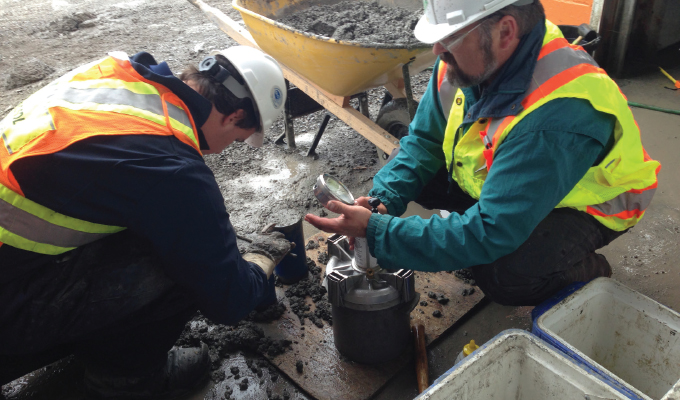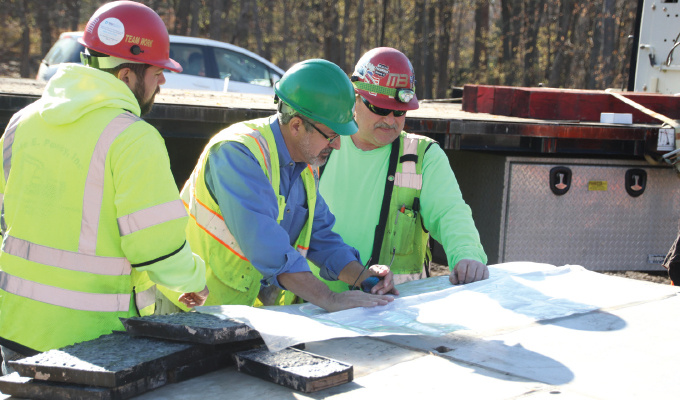As climate change and resource scarcity intensify, the construction industry faces mounting pressure to reduce its environmental impact. Concrete—though indispensable for commercial infrastructure—presents a dual challenge: It is both the backbone of modern construction and a major contributor to global carbon emissions. As such, traditional “take-make-dispose” approaches are no longer viable. Instead, a transformative model is gaining momentum: the circular economy.
In a circular economy, materials are not discarded after use but are repaired, reused, and reintegrated into new applications. This regenerative approach will redefine how concrete is manufactured, maintained, and reused. For commercial concrete contractors, understanding and adopting circular principles is becoming essential—not just to meet environmental mandates but to improve operational efficiency and enhance long-term asset performance.
NEW CONCRETE LIFECYCLE
Conventional thinking treats concrete structures as having finite lives: build, use, demolish, dispose. But this model creates vast amounts of construction and demolition waste and demands ongoing extraction of raw materials like aggregates, cement, and water.
Rather than viewing demolition as an endpoint, circular practices focus on life extension. This shift includes rehabilitating deteriorating structures using advanced repair and protection systems, preserving embodied carbon, and reducing demand for new materials. Instead of rebuilding from scratch, contractors can now extend infrastructure service life through strategic interventions that simultaneously reduce costs, environmental impact, and downtime.

REPAIR AND PROTECTION
Preservation lies at the core of circular economy strategies in concrete. The ability to restore and extend the life of existing structures directly displaces the need for carbon-intensive new builds. Advanced repair technologies—such as high-performance mortars, structural strengthening systems, and migratory corrosion inhibitors—allow for durable rehabilitation even in harsh environments. These technologies not only restore integrity but also minimize degradation from various stressors.
Protection technologies further enhance durability. Surface sealers, breathable water repellents, and chemically resistant coatings shield concrete from moisture ingress, chloride attack, freeze-thaw damage, and alkali-silica reaction. A proactive approach to protection reduces lifecycle maintenance demands and strengthens the asset’s ability to perform under severe loading and exposure conditions. Together, repair and protection form a dual strategy that keeps structures in service longer, which is critical to realizing the full environmental and economic benefits of circularity.
MATERIAL RECOVERY AND RESOURCE EFFICIENCY
A circular economy also emphasizes material recovery and reuse. Crushed concrete from demolition is no longer just waste; it becomes a resource. Recycled concrete aggregate (RCA) can be used as a substitute for virgin materials in structural and non-structural applications, including road base, fill, and new concrete mixes. Improvements in processing and quality control have made RCA a reliable option, particularly when local material availability or sustainability goals drive interest in closed-loop systems.
Beyond RCA, supplementary cementitious materials (SCM) offer another path to circularity. Fly ash, ground granulated blast furnace slag, and silica fume—industrial byproducts once considered waste—are now integral to modern concrete formulations. These materials enhance strength, reduce permeability, and increase chemical resistance, all while lowering the carbon footprint of concrete. They divert industrial waste from landfills and align with performance-driven mix design strategies.
REDUCING EMBODIED CARBON
Cement, the key binder in concrete, makes up roughly 8 percent of global CO₂ emissions. Reducing its impact is a focus of the circular economy. By extending structure lifespans, contractors can limit the volume of new concrete produced, thus avoiding emissions at the source. When combined with SCMs and RCA, concrete’s embodied carbon can be significantly lowered without sacrificing performance.
Technologies like carbon mineralization and carbon capture utilization are now entering the commercial landscape, enabling CO₂ to be sequestered directly into concrete during curing or manufacturing. These innovations allow contractors and suppliers to contribute to decarbonization goals while continuing to meet structural and durability requirements. In effect, concrete is transformed from a carbon emitter into a carbon sink—aligning with broader regulatory trends and investor expectations for climate-forward practices.
ECONOMIC VIABILITY OF CIRCULAR PRACTICES
While environmental benefits are compelling, economic drivers are often the deciding factor on job sites. In many scenarios, repairing and upgrading existing concrete structures is more cost-effective than full demolition and replacement. When factoring in the costs of hauling, disposal, downtime, and sourcing virgin materials, the value proposition for circular practices becomes even clearer.
Furthermore, using recycled aggregates and SCMs can reduce material costs while contributing toward LEED credits and other green building certifications. Owners, developers, and public agencies increasingly demand documentation of sustainable practices, making circularity a key factor in securing high-value commercial projects. Contractors who understand how to specify, install, and maintain circular solutions are better positioned to win work in an environmentally conscious marketplace.
INDUSTRY-WIDE TRANSFORMATION
The transition to a circular economy will not be achieved in isolation. It requires input across the value chain—material producers, design engineers, contractors, owners, and policymakers must contribute. For contractors, this means aligning with manufacturers that offer low-carbon, long-life products compatible with recycled inputs and durable repair solutions. It also means engaging in lifecycle thinking, evaluating performance not just at the time of installation but over decades of service.
Governments and industry organizations have an essential role in accelerating this shift. Incentives, mandates and performance-based standards will be critical to normalize practices like material reuse, lifecycle carbon assessment, and durability-focused design. As the regulatory landscape evolves, contractors who are already using circular strategies will be best equipped to comply and lead.
Concrete will remain fundamental to commercial construction for generations to come. The question is not whether we use it, but how we use it more intelligently. By embracing repair, protection and material reuse as standard practices, the circular economy offers a roadmap for doing just that—minimizing waste, maximizing value, and creating infrastructure that is both resilient and regenerative.

about the author
Jennifer Mizer is the director of marketing services at Euclid Chemical, a leading manufacturer of specialty concrete and masonry construction solutions. A 20-plus-year industry veteran, Mizer manages the marketing communications activities for Euclid’s expansive line of admixtures, fiber reinforcement, concrete repair products, flooring materials, and decorative concrete systems. For more, visit www.euclidchemical.com.


